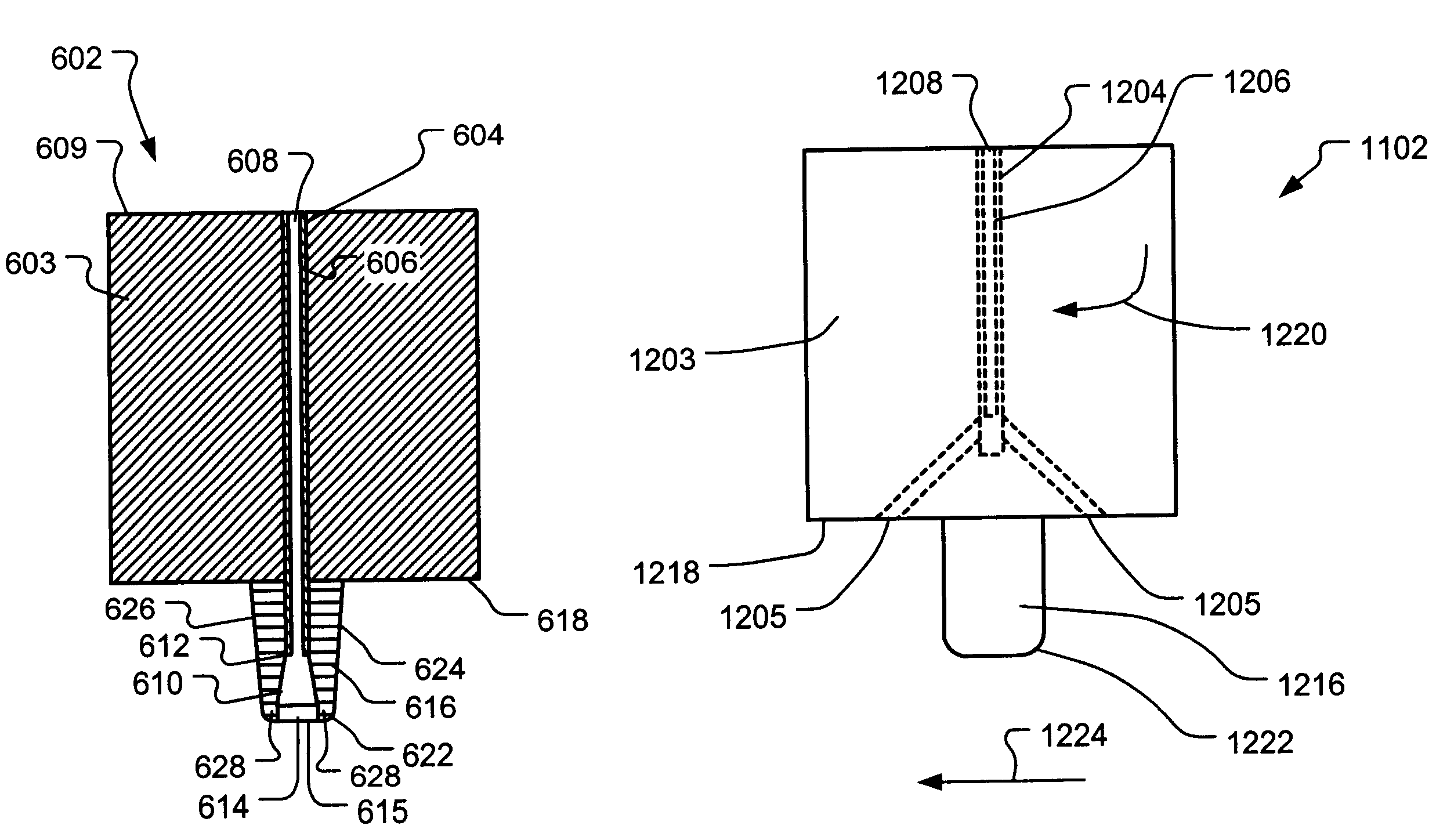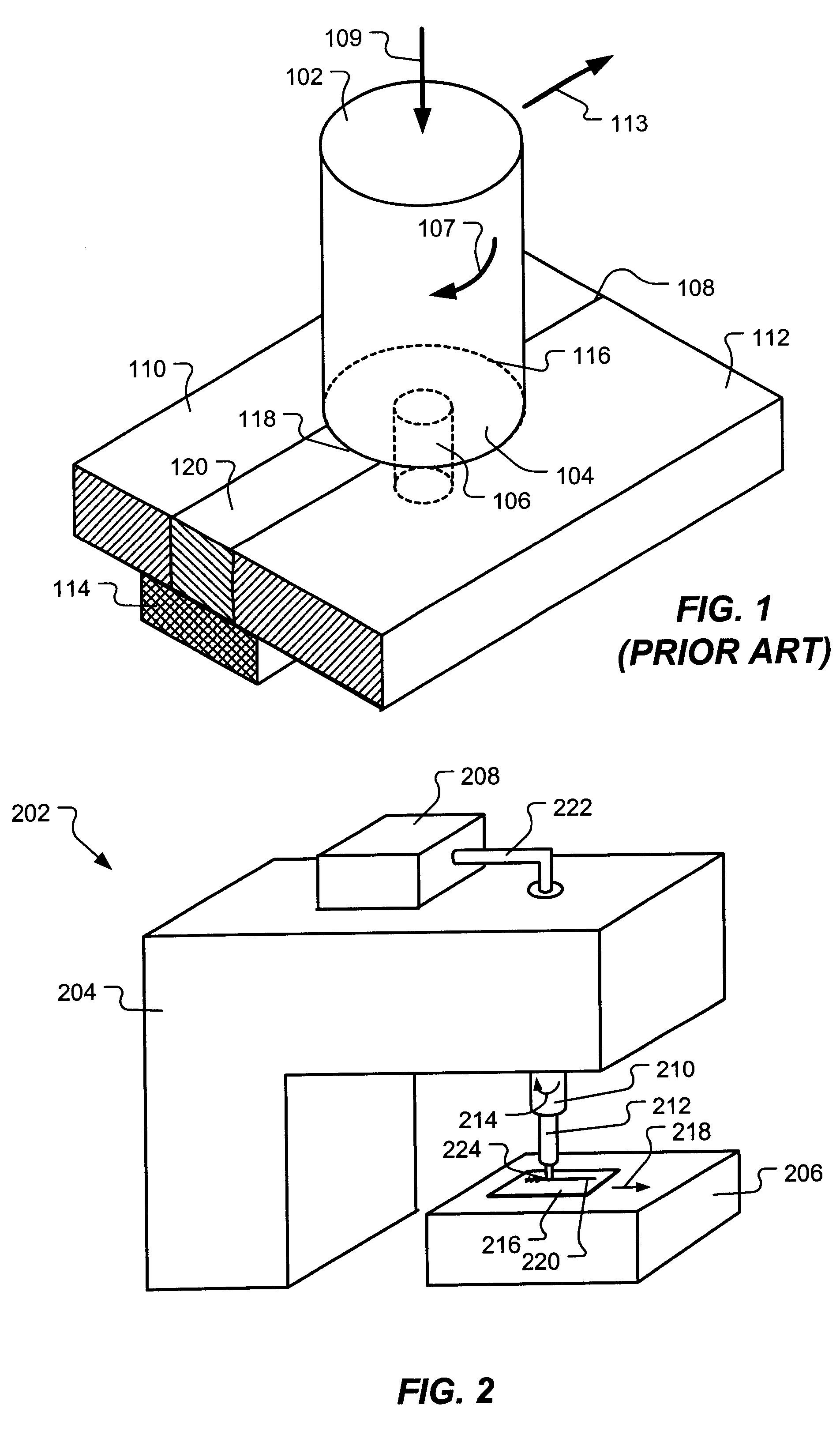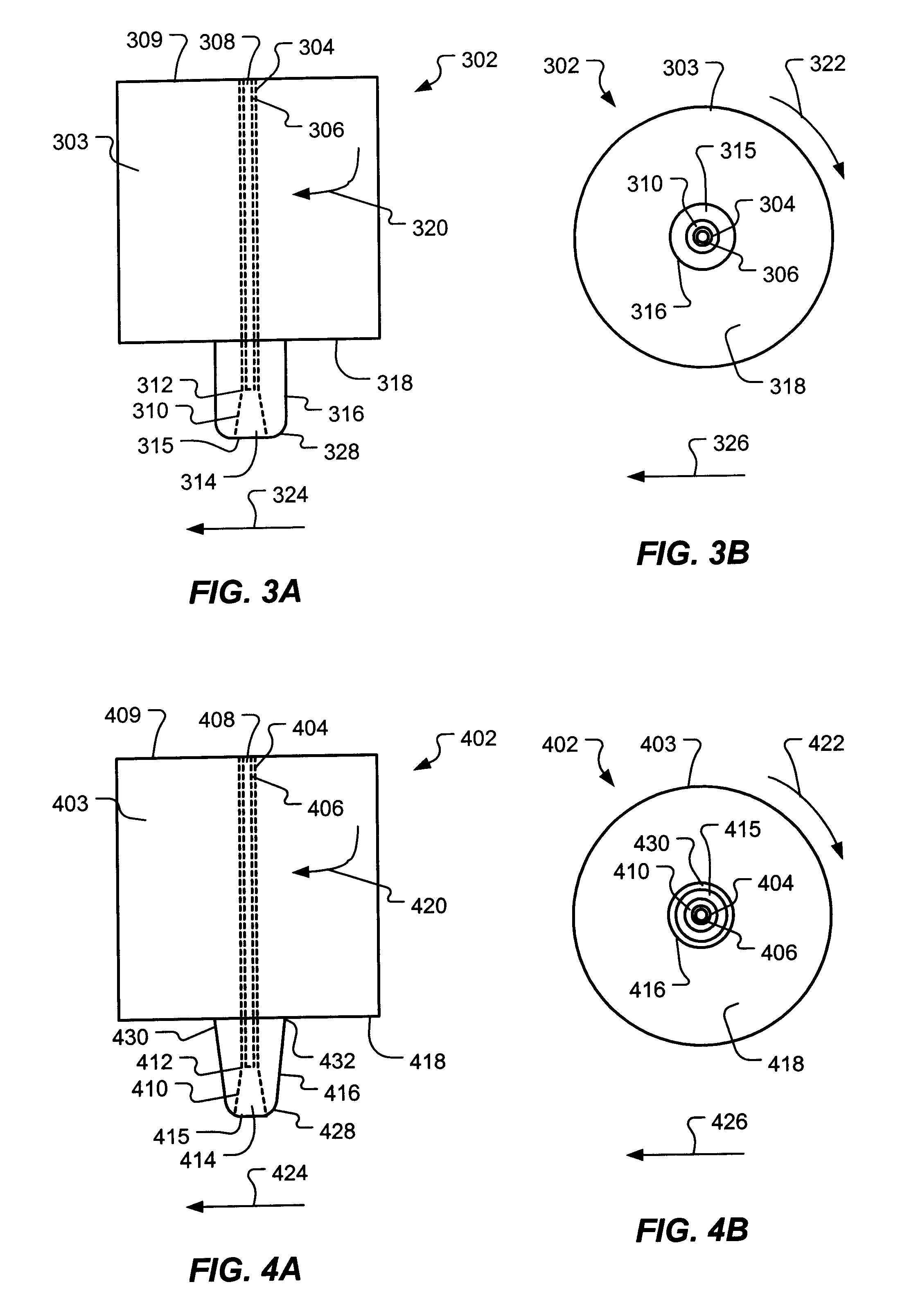Apparatus and method for friction stir welding using filler material
a technology of filler material and friction stir, which is applied in the direction of soldering apparatus, manufacturing tools,auxillary welding devices, etc., can solve the problems of geometric distortions near the weld joint of conventional welding processes, workpieces made of commercial metallic alloys (e.g., 2000- and 7000-series aluminum alloys) that are difficult to join by conventional welding processes,
- Summary
- Abstract
- Description
- Claims
- Application Information
AI Technical Summary
Problems solved by technology
Method used
Image
Examples
first embodiment
Referring now to FIGS. 3A and 3B, the friction stir welding tool 212 is shown. A friction stir welding tool 302 according to the present invention has a body 303 and a passageway 304 through the friction stir welding tool 302 capable of allowing a filler material (not shown) to pass therethrough. The passageway 304 further comprises an entrance opening 308 in an upper surface 309 of the body 303 and a flared portion 310 that transitions from a diameter at a transition location 312 along the passageway 304 to a larger diameter of an exit opening 314 in a lower surface 315 of a pin 316. While the illustrated embodiment provides the passageway 304 having the flared portion 310, it is within the scope of the present invention for the passageway 304 to have no flared portion, for the passageway 304 to taper from the entrance opening 308 to the exit opening 314, or for the flared portion 310 to begin at a location other than the transition location 312 along the passageway 304.
In one embo...
second embodiment
Referring now to FIGS. 4A and 4B, the friction stir welding tool 212 in FIG. 2 is shown. As compared to the embodiment of FIGS. 3A and 3B, the embodiment illustrated in FIGS. 4A and 4B includes a pin 416 that is tapered from an upper end 432 to a smaller diameter at a radiused portion 428.
A friction stir welding tool 402 according to the present invention has a body 403 and a passageway 404 through the friction stir welding tool 402 capable of allowing a filler material (not shown) to pass therethrough. The passageway 404 further comprises an entrance opening 408 in an upper surface 409 of the body 403 and a flared portion 410 that transitions from a diameter at a transition location 412 along the passageway 404 to a larger diameter of an exit opening 414 in a lower surface 415 of the pin 416. While the illustrated embodiment provides the passageway 404 having the flared portion 410, it is within the scope of the present invention for the passageway 404 to have no flared portion, fo...
third embodiment
the friction stir welding tool 212 shown in FIG. 2 is illustrated in FIGS. 5A and 5B. As compared to the embodiment of FIGS. 4A and 4B, the embodiment illustrated in FIGS. 5A and 5B includes a plurality of openings 528 leading from a flared portion 510 through a side surface 531 of a pin 516. A friction stir welding tool 502 comprises a body 503 and a passageway 504 through the friction stir welding tool 502 capable of allowing a filler material (not shown) to pass therethrough. The passageway 504 further comprises an entrance opening 508 in an upper surface 509 of the body 503 and the flared portion 510 that transitions from a diameter at a transition location 512 along the passageway 504 to a larger diameter of an exit opening 514 in a lower surface 515 of the pin 516. While the illustrated embodiment provides the passageway 504 having the flared portion 510, it is within the scope of the present invention for the passageway 504 to have no flared portion, for the passageway 504 to...
PUM
| Property | Measurement | Unit |
|---|---|---|
| thicknesses | aaaaa | aaaaa |
| thicknesses | aaaaa | aaaaa |
| friction | aaaaa | aaaaa |
Abstract
Description
Claims
Application Information
 Login to View More
Login to View More - R&D
- Intellectual Property
- Life Sciences
- Materials
- Tech Scout
- Unparalleled Data Quality
- Higher Quality Content
- 60% Fewer Hallucinations
Browse by: Latest US Patents, China's latest patents, Technical Efficacy Thesaurus, Application Domain, Technology Topic, Popular Technical Reports.
© 2025 PatSnap. All rights reserved.Legal|Privacy policy|Modern Slavery Act Transparency Statement|Sitemap|About US| Contact US: help@patsnap.com



